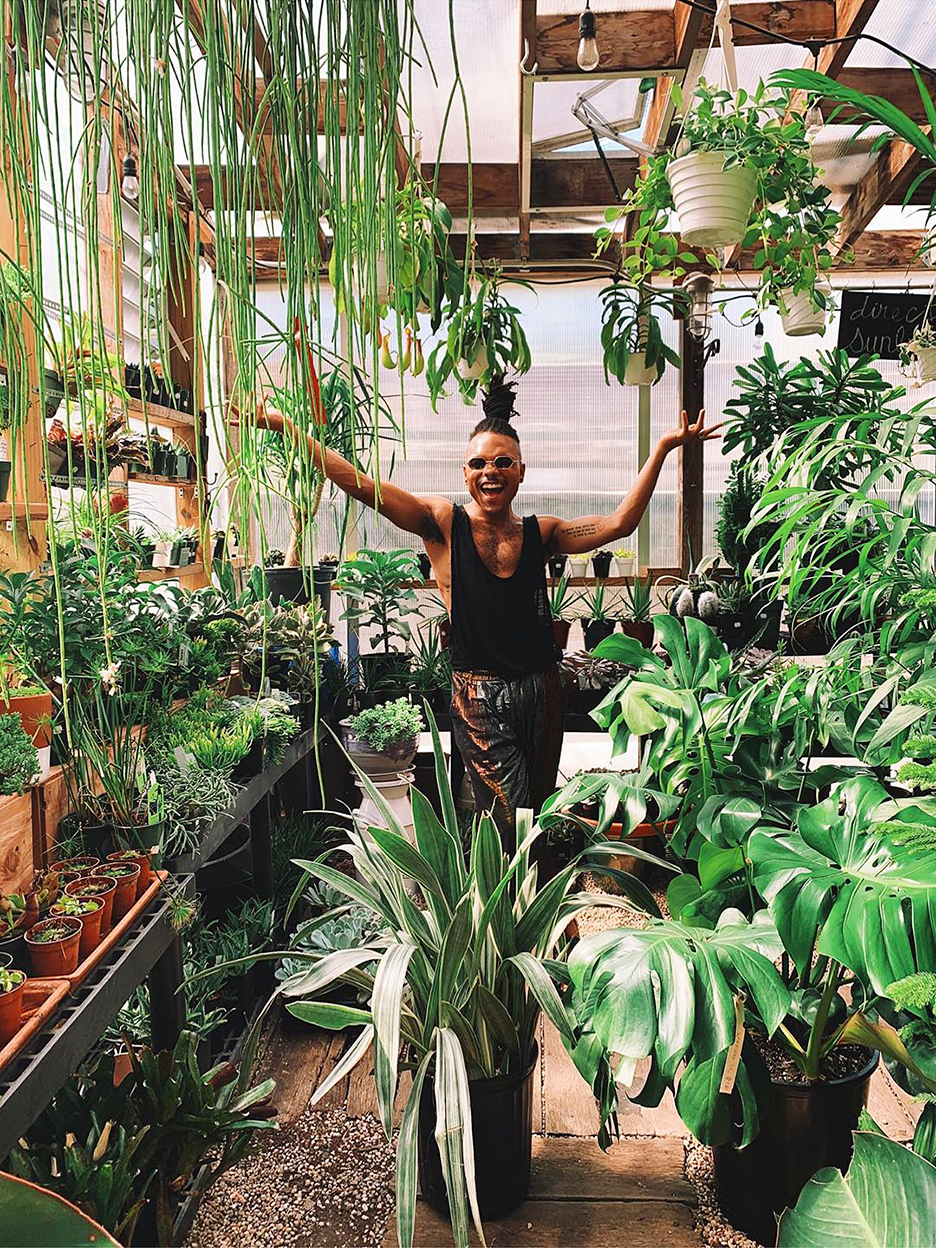We may earn revenue from the products available on this page and participate in affiliate programs.
In our ever-growing Plant Parents series, we ask some of our favorite green thumbs for their advice on everything flora, from training trailing plants to reviving greenery that gets brown or droopy. Over time our knowledge has bloomed—we’ve learned how to propagate (hey, free plants!) and what Fleetwood Mac songs should be played during waterings.
But we couldn’t keep all that good information to ourselves. So we rounded up the best-of-the-best plant-styling advice from all our experts and put it in one handy guide for you here. Happy planting!
Decorate Around Your Greenery

Sometimes you’ve got to think in this order: plants first, furniture second. Domino’s executive creative director, Kate Berry, found that was the case with her fiddle-leaf fig tree, which she’s had for three years. “For a while, I just had the tree in this one position and it was glorious,” she says. “But then I noticed that the right side wasn’t getting direct sunlight, and the side that was getting full-on sun was taking over. I rearranged my furniture and moved the tree so the right side faced the light. It’s trial and error. This guy could also be like, ‘Screw you’ and go into shock. So I’m in there every day talking to my tree, asking how it’s doing.”

Take Direction From Friends
“Every time I step into a friend’s apartment, I always say, ‘What direction are you facing?’” says Plant Kween Christopher Griffin. “I like to assess their living situation so I can match a plant to their apartment. I really love to gift snake plants—they’re so resilient, and you don’t need to water them often. They can also survive in a lot of different lighting conditions.”
Create a Calming Environment
On Sundays, Sunwink founder Jordan Schenck cranks the Fleetwood Mac and grabs her smudge stick: “I have a little weekend ritual that involves me sageing every corner of my apartment. I try to focus on clearing out weird energy that builds up in my space throughout busy weeks, because I know my greenery can definitely feel the stress, too.”
Grow to Eat
Rather than put them in vases, writer, editor, and creative director Alex Tiehgi Walker prefers to eat and drink his blooms—and dried flowers also make a pretty display in a bowl. “I have so many herbs that are useful for cooking, including more unusual ones such as lemon balm, anise hyssop, and rue,” he says. “I cook with my plants a lot (preserving lemons is a favorite). In the summer months I’ll pick chamomile flowers from the garden, then dry and store the rest to use throughout the year. Steeped in hot water and paired with my homemade honey, they make a delicious bedtime drink. Same for any herb, really—tea made with dried sage leaves is great if you have a sore throat, and mint is so simple but comforting. I like a plant with a purpose.”
Tieghi Walker’s potted lemon, Buddha’s hand (his favorite fruit), fig, olive trees do double duty as living sculpture. “They make the dining area feel lush and Mediterranean. It’s fun when friends bring their kids over and I can show them how to pick fruit straight from the tree, smell it, and eat it.”
Water With Care

There’s such a thing as giving your houseplants too much attention. “Since they’re in a pot, it’s easy for their roots to rot if you overwater them,” says landscape artist Lily Kwong. “Don’t let them dry out, but if you stick a finger in the dirt and it comes out even a little wet, don’t water it. And don’t let it sit in a saucer of water—it will just suck it all out.”
DIY the Perfect Potting Mix
“Figuring out the right mix of soils was a challenge,” Sustainable Brooklyn cofounder Dominique Drakeford says of her foray into mixing her own dirt. “Initially I purchased a potting mix, but now I make my own. It’s been so much better than store-bought. At the end of the day, it’s all about the soil—that’s how you get healthy plants. As a base, I mix perlite with compost from my bin and coco coir. The amendments I like to add to my soil are ground-up eggshells—they have to be in powder from so that they become bioavailable. I add magnesium sulfate, which is Epsom salts for peppers and tomatoes. My fiancé and I drink quite a bit of coffee these days, so I also add in coffee grounds. I’m very big on cinnamon—it’s an antifungal—because I don’t spray any pesticides or herbicides or insect repellent.”
Get Some Air

During a trip to her favorite plant shop, Madewell’s head of design, Joyce Lee, spoke with plant guru Chris Gully about a sorely misunderstood species: air plants. “There’s a lot of misinformation out there about how they should be taken care of,” explains Gully. They don’t work with any soil mediums. “You could technically add some to them, but you would just need something like an orchid mix,” he clarifies. And they’re always going to do better in a bright, ambient-lit location versus direct sun or low light. Watering air plants means soaking them. “Dunk them in filtered water for five minutes, or up to an hour for the really big ones, then let them dry upside down,” says Gully. Lee has them sprinkled throughout her apartment. “They’re so versatile, because you can plop them anywhere!” she notes.

Our Winter Renovation issue is here! Subscribe now to step inside Leanne Ford’s latest project—her own historic Pennsylvania home. Plus discover our new rules of reno.









